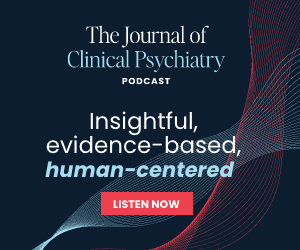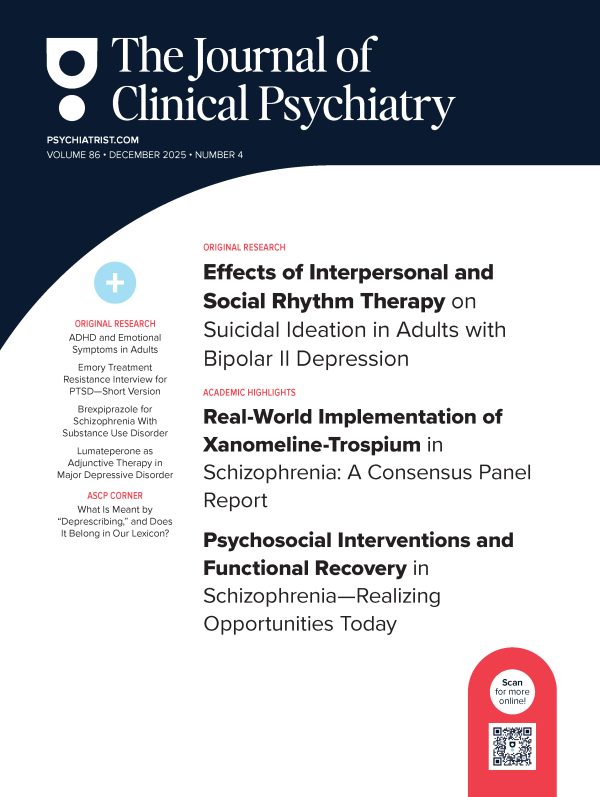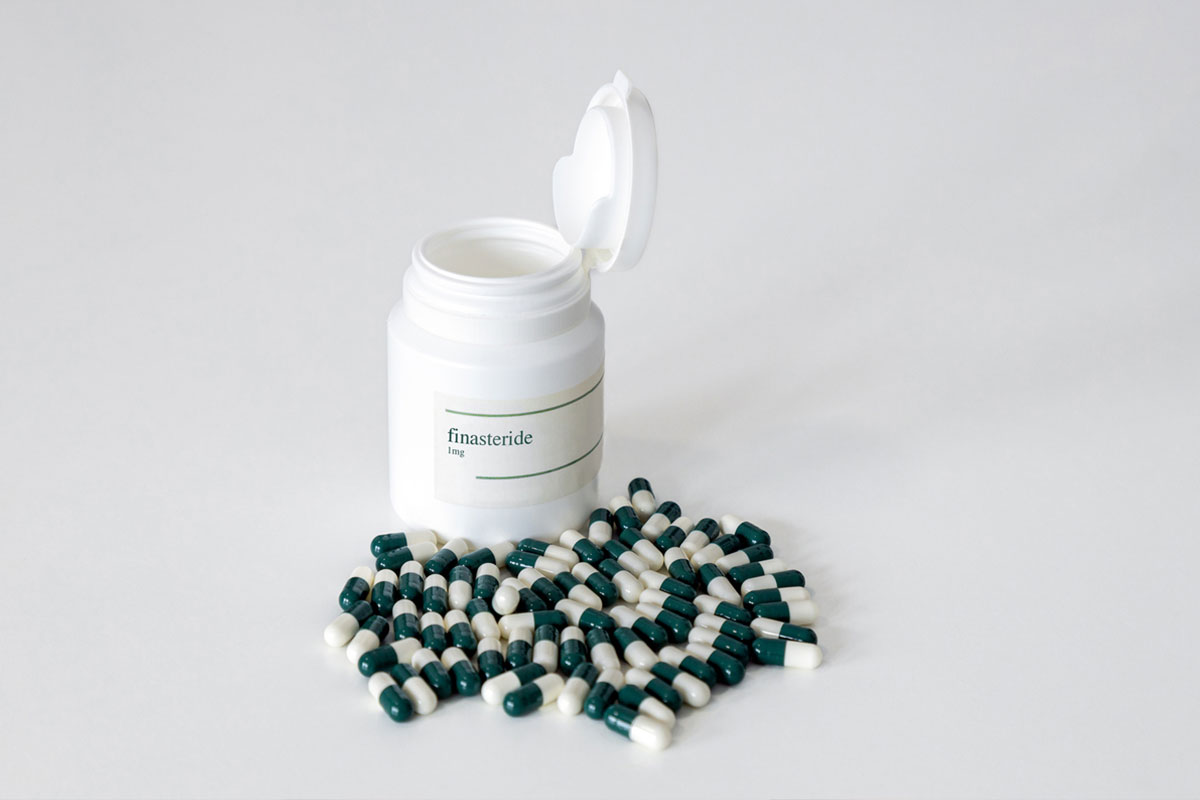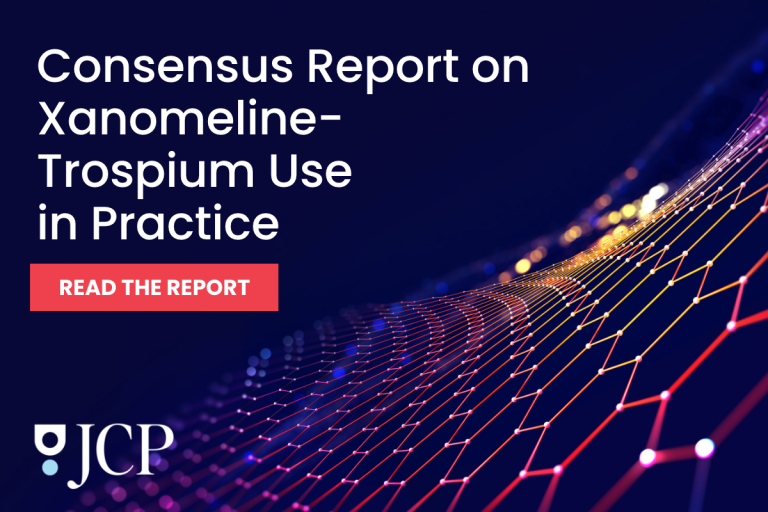Abstract
Background: Short-term studies have demonstrated antisuicidal effects of ketamine/esketamine for patients with treatment-resistant depression (TRD). However, long-term data and their impact in reducing suicidality-related health care utilization are limited. This 6-month mirror-image study compares suicidality-associated emergency department (ED) visits before and after acute treatment with ketamine/esketamine in a TRD cohort.
Method: This study included adults with TRD evaluated at Mayo Clinic Depression Center (Rochester, Minnesota) from May 2018 to May 2024, who received an acute series of intravenous (IV) ketamine or intranasal (IN) esketamine treatments. The primary outcome measure was the number of suicidality-associated ED visits in the 6 months before and after treatment. Negative binomial mixed-effects model was utilized to analyze suicidality-associated ED visits per person, estimating incidence rate ratios (IRRs) and 95% confidence intervals for the change between pre-and posttreatment periods.
Results: Of 124 eligible individuals, 27 were excluded due to unavailable data, leaving 97 for analysis. The cohort was 69% female, with a median age of 48.9 years; 97% had major depressive disorder, and most (75%) received IV ketamine. After the acute treatment phase, ED visits for suicidal ideation decreased by 84% (IRR=0.16, 95% CI, 0.06–0.46, P=.001), and total ED visits for suicidality decreased by 63% (IRR=0.37, 95% CI, 0.18–0.77, P=.007).
Conclusions: Ketamine and esketamine reduced long-term ED visits for suicidality in individuals with TRD. Further longer-term follow-up research is encouraged to ascertain if these benefits on suicidality reduction are mood state dependent or reflect an independent mechanism.
J Clin Psychiatry 2025;86(4):25m15941
Author affiliations are listed at the end of this article.
Members Only Content
This full article is available exclusively to Professional tier members. Subscribe now to unlock the HTML version and gain unlimited access to our entire library plus all PDFs. If you’re already a subscriber, please log in below to continue reading.
References (35)

- World Health Organization (WHO). Depression. WHO; 2020. Accessed June 4, 2024. https://www.who.int/news-room/fact-sheets/detail/depression.
- Greenberg PE, Fournier A-A, Sisitsky T, et al. The economic burden of adults with major depressive disorder in the United States (2010 and 2018). Pharmacoeconomics. 2021;39(6):653–665. PubMed CrossRef
- Nierenberg A, Husain M, Trivedi M, et al. Residual symptoms after remission of major depressive disorder with citalopram and risk of relapse: a STAR*D report. Psychol Med. 2010;40(1):41–50. PubMed CrossRef
- Cai H, Jin Y, Liu S, et al. Prevalence of suicidal ideation and planning in patients with major depressive disorder: a meta-analysis of observation studies. J Affect Disord. 2021;293:148–158. PubMed CrossRef
- Sokero TP, Melartin TK, Rytsala HJ, et al. Suicidal ideation and attempts among psychiatric patients with major depressive disorder. J Clin Psychiatr. 2003;64(9):1094–1100. CrossRef
- Bergfeld IO, Mantione M, Figee M, et al. Treatment-resistant depression and suicidality. J Affect Disord. 2018;235:362–367. PubMed CrossRef
- Canner JK, Giuliano K, Selvarajah S, et al. Emergency department visits for attempted suicide and self harm in the USA: 2006-2013. Epidemiol Psychiatr Sci. 2018;27(1):94–102. PubMed CrossRef
- Leon AC, Solomon DA, Li C, et al. Antidepressants and risks of suicide and suicide attempts: a 27-year observational study. J Clin Psychiatry. 2011;72(5):580–586. PubMed CrossRef
- Li Y, Chen C, Chen Q, et al. Effects of selective serotonin reuptake inhibitors (SSRIs) on suicide: a network meta-analysis of double-blind randomized trials. Psychiatry Res. 2024;336:115917. PubMed CrossRef
- Eugene AR. Country-specific psychopharmacological risk of reporting suicidality comparing 38 antidepressants and lithium from the FDA Adverse Event Reporting System, 2017-2023. Front Psychiatry. 2024;15:1442490. PubMed CrossRef
- Singh B. Ketamine and esketamine for depression in daily practice: opportunities and challenges. J Clin Psychopharmacol. 2024;44(5):451–455. PubMed CrossRef
- Phillips JL, Norris S, Talbot J, et al. Single and repeated ketamine infusions for reduction of suicidal ideation in treatment-resistant depression. Neuropsychopharmacology. 2020;45(4):606–612. PubMed CrossRef
- Fountoulakis KN, Saitis A, Schatzberg AF. Esketamine treatment for depression in adults: a PRISMA systematic review and meta-analysis. Am J Psychiatr. 2025:20240515.
- Singh B, Vande Voort JL, Pazdernik VK, et al. Treatment-resistant depression patients with baseline suicidal ideation required more treatments to achieve therapeutic response with ketamine/esketamine. J Affect Disord. 2024;351:534–540. PubMed CrossRef
- Pan Y, Gorenflo MP, Davis PB, et al. Suicidal ideation following ketamine prescription in patients with recurrent major depressive disorder: a nation-wide cohort study. Transl Psychiatry. 2024;14(1):327. PubMed CrossRef
- Harding L, Zhdanava M, Teeple A, et al. Health care resource use and medical costs among patients with major depressive disorder and acute suicidal ideation or behavior initiated on Esketamine Nasal spray or traditional treatments in the United States. Clin Ther. 2025;47(3):189–195. PubMed CrossRef
- Hjorthøj CR, Madsen T, Agerbo E, et al. Risk of suicide according to level of psychiatric treatment: a nationwide nested case-control study. Soc Psychiatry Psychiatr Epidemiol. 2014;49(9):1357–1365. PubMed
- Cavalcanti S, Pazdernik VK, Vande Voort JL, et al. Baseline perceived stress as a predictor of ketamine/esketamine treatment response in treatment-resistant depression. J Affect Disord. 2025;383:283–289. PubMed CrossRef
- Singh B, Kung S, Pazdernik V, et al. Comparative effectiveness of intravenous ketamine and intranasal esketamine in clinical practice among patients with treatment-refractory depression: an observational study. J Clin Psychiatry. 2023;84(2):22m14548. PubMed CrossRef
- Kumar R, Joseph B, Pazdernik VM, et al. Real-world clinical practice among patients with bipolar disorder and chronic kidney disease on long-term lithium therapy. J Clin Psychopharmacol. 2023;43(1):6–11. PubMed CrossRef
- Serra G, Koukopoulos A, De Chiara L, et al. Three-year, naturalistic, mirror-image assessment of adding memantine to the treatment of 30 treatment-resistant patients with bipolar disorder. J Clin Psychiatry. 2015;76(1):20969.
- Rush AJ, Trivedi MH, Ibrahim HM, et al. The 16-Item Quick Inventory of Depressive Symptomatology (QIDS), clinician rating (QIDS-C), and self-report (QIDS-SR): a psychometric evaluation in patients with chronic major depression. Biol Psychiatry. 2003;54(5):573–583. PubMed CrossRef
- Centers for Disease Control and Prevention (CDC). Facts About Suicide. CDC; 2024. Accessed September 4, 2025. https://www.cdc.gov/suicide/facts/
- Altê GA, Rodrigues ALS. Exploring the molecular targets for the antidepressant and antisuicidal effects of ketamine enantiomers by using network pharmacology and molecular docking. Pharmaceuticals (Basel). 2023;16(7):1013. PubMed
- Can AT, Hermens DF, Mohamed AZ, et al. Treatment response with ketamine in chronic suicidality: an open label functional connectivity study. J Affect Disord. 2023;331:92–100. PubMed CrossRef
- Mann JJ, Rizk MM. A brain-centric model of suicidal behavior. Am J Psychiatry. 2020;177(10):902–916. PubMed CrossRef
- Ballard ED, Ionescu DF, Vande Voort JL, et al. Improvement in suicidal ideation after ketamine infusion: relationship to reductions in depression and anxiety. J Psychiatr Res. 2014;58:161–166. PubMed CrossRef
- Chen-Li DCJ, Mansur RB, Di Vincenzo JD, et al. Effect of intravenous ketamine on suicidality in adults with treatment-resistant depression: a real world effectiveness study. Psychiatry Res. 2025;343:116282. PubMed CrossRef
- Patarroyo-Rodriguez L, Cavalcanti S, Vande Voort JL, et al. The use of ketamine for the treatment of Anhedonia in depression. CNS Drugs. 2024;38(8):583–596. PubMed CrossRef
- Ballard ED, Yarrington JS, Farmer CA, et al. Characterizing the course of suicidal ideation response to ketamine. J Affect Disord. 2018;241:86–93. PubMed CrossRef
- Singh B, Pazdernik VK, Kung S, et al. Long-term outcomes in patients with treatment-refractory depression receiving intravenous ketamine and intranasal esketamine: An observational study. J Clin Psychiatry. 2025;86(3):25m15831. PubMed CrossRef
- Cernat A, Pahwa M, Hadid D, et al. Patient experiences of treatment-resistant depression (TRD): a systematic review and qualitative meta-synthesis. PLOS Ment Health. 2024;1(6):e0000128. CrossRef
- D’Anci KE, Uhl S, Giradi G, et al. Treatments for the prevention and management of suicide: a systematic review. Ann Intern Med. 2019;171(5):334–342. PubMed
- Jobes DA, Rizvi SL. The use of CAMS and DBT to effectively treat patients who are suicidal. Front Psychiatry. 2024;15:1354430. PubMed CrossRef
- Del Casale A, Spirito S, Arena JF, et al. Esketamine combined with SSRI or SNRI for treatment-resistant depression. JAMA psychiatry. 2025;82(8):810–817. PubMed CrossRef






